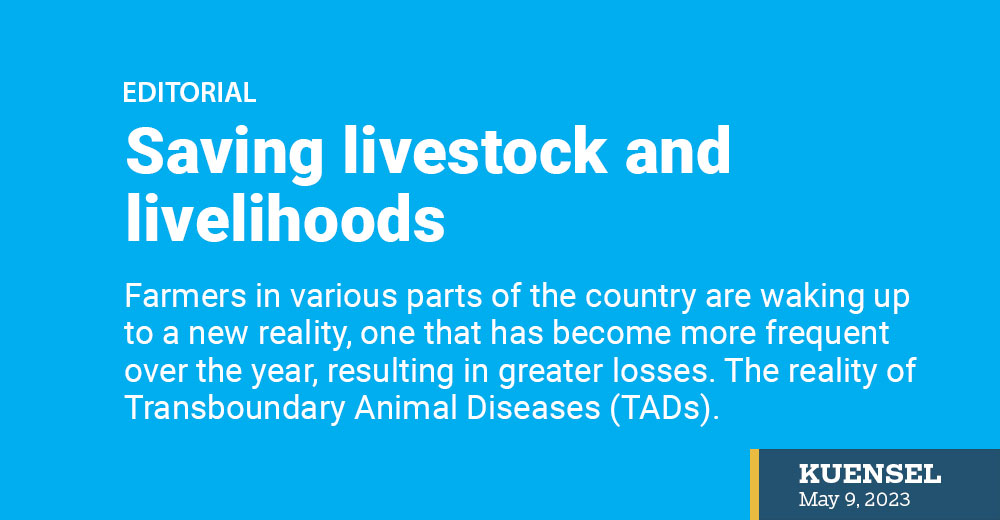Farmers in various parts of the country are waking up to a new reality, one that has become more frequent over the year, resulting in greater losses. The reality of Transboundary Animal Diseases (TADs).
The first case of African Swine Flu (ASF), a highly contagious viral disease, was reported in Bhutan on May 13 in 2021 in roaming pigs in Phuentsholing. Bhutan then became the 16th country to report the disease in Asia. In April last year, a new ASF outbreak occurred on a semi-commercial pig farm in Sampheling, Chukha. In early November, outbreaks occurred in Pemathang and Dewathang gewogs in Samdrupjongkhar. Recently, cases have been confirmed from three domestic pig farms in Sarpang and Dagana. Controlling ASF outbreaks cost the government more than Nu 21.2 million last year alone.
In Bhutan, the livestock sector contributes 8.71 percent to the Gross Domestic Product. However, the sector incurs huge losses in addressing the various animal diseases spread from the border areas.
As the world becomes more interconnected, the spread of diseases is no longer limited to a country or a region. Even as International experts are discussing measures to prevent and control TAD in the region, our officials in Lhamoidzingkha in Dagana are battling the second outbreak of African Swine Fever (ASF) in the drungkhag.
In the South Asian region, TADs have increasingly, and severely, impacted the productivity of the livestock sector and livelihoods of small farmers. In low and middle-income countries, experts say that TADs result in losses in production, utility and income, creating a compounding effect on the livelihoods, food security and nutrition of smallholders.
The issue of TADs in our region is further complicated by the movement of animals across borders. In many cases, animals are moved without proper health certification or quarantine, which can lead to the spread of diseases. We need to make our communities along the border aware of the risks of such free movement of animals or animal products. The local governments have to ensure that the residents know the threats and devise measures to curb such movements.
The use of technology can also play a significant role in addressing TADs in landlocked countries. For example, the use of satellite imagery can help identify areas at risk of disease outbreaks, while mobile apps can enable veterinary professionals to quickly identify and report outbreaks. Advance in genetics and bio-informatics can also aid in the identification and tracking of disease outbreaks.
At a regional level, the good news is that there is some progress in addressing the issues. By the end of this week, experts at the FAO meeting in Paro would have charted out a plan to address sort of the problems.
Addressing challenges posed by TADs requires continued collaboration between governments, international organizations, and the private sector.
The Paro conference is a good start.


